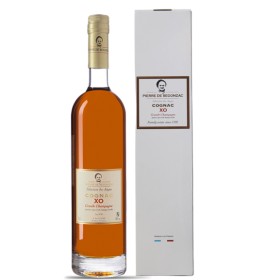- Mondo Vino
- 3525 views

We have seen that calvados AOC are similar to Brandy which in France are called Cognac and Armagnac We start from a macroscopic difference: Brandy are distilled with wines or pomace, so fruit in this case is no longer apple (and pera) but grapes.
Let's start from a macroscopic difference: Brandys are distilled with wines or pomace, so fruit in this case is no longer apple (and pera) but grapes. And they change their name depending on the country of production, in Spain it is simply called Spanish Brandy, but in France the issue is more serious: Cognac is located north of Bordeaux while Armagnac is located south of Bordeaux,on the slopes of the Pyrenees. For both white grapes are used, but while Cognac is made only with Ugni Blanc (our Trebbiano), for Armagnac they are usually mixed bunches of three different vines: Folle blanche, Colombard and Baco blanc. The production areas are then further divided.
The Cognac production area has six sub-areas called Crus, and that do not center with the Champagne of Reims which is more than 500 km northeast and which are classified according to the gypsum contained in the soil.
The Grande Champagne is the cru that is located in the heart of the denomination, and here Cognac is produced for a very long aging, even over 50 years. Superb
The Petit Champagne south of the Great Countryside, has a more crumbly terrain and with less chalk, for this reason, for the same climate with the Great Champagne, it is identified differently. The Cognacs of this region, with extreme aging, lose their finesse, but remain of undisputed high quality and it is difficult, for an experienced palate to find the differences even in medium and long aging.
Borderies is the smallest Crus in all of Cognac, it is located north of the Great Champagne and the grounds are predominantly clays. Usually used to give shape to Cognacs produced in other Crus, they are very rare to find.
Fin Bois and Bons Bois have heterogeneous soils and although they produce Cognac with a more modest body the first and more vigorous the second, the Cognacs produced in these areas do not bear aging well.
Finally, Bois Ordinaries has a predominantly sandy terrain, as it overlooks the ocean, and thus a marine climate. The Cognac of these areas are therefore weaker, less fine and not suitable for aging, very similar to our Grappa.
Cognac, in addition to the designation of origin, therefore the cru, is also identified according to the years of aging, since it is usually a blend of different vintages, as for Whisky, except for the thousandths, which provide only for the use of distillates of the same vintage.

